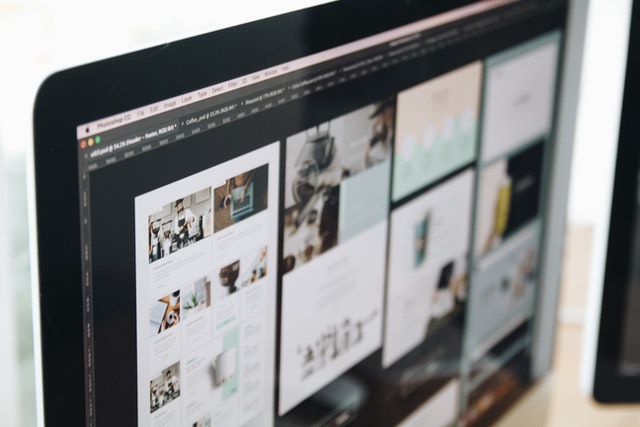UI design is one of the most important aspects of a website or app. If your user interface isn’t appealing or easy to use, people will not stick around long enough to see what else you have to offer. This blog post will discuss eight essential UI design tips you should implement today!
1. Use Typography To Create A Hierarchy
One of the most important aspects of UI design is typography. The way that you use fonts can have a big impact on the overall look and feel of your website or app. When it comes to typography, there are two main things that you should keep in mind: hierarchy and contrast.
Creating a hierarchy with typography is important because it helps users understand what information is most important. You can do this by using different font sizes or weights for different pieces of text. For example, you might use a larger font size for headings and smaller font size for body text. You can also use bold or italic fonts to make certain words stand out.
It’s also essential to ensure enough contrast between the different elements on your page. If everything is the same size and color, it will be difficult for users to know where to look or what information is most important. Use light and dark colors and different font sizes and weights to create contrast and help users understand your hierarchy.
2. Make Use Of Whitespace
In addition to using typography to create hierarchy, you can also use whitespace. Whitespace is the space on a page that is not occupied by text or other elements. Using whitespace in your UI design might seem counterintuitive, but it can actually be very effective.
Whitespace can help break up large chunks of text and make them more digestible for users. It also helps to create a visual hierarchy and emphasize certain elements on the page. When used correctly, whitespace can make your UI design sleeker and professional-looking.
3. Choose The Right Colors
The colors you use in your UI design will greatly impact the overall look and feel of your website or app. Choosing colors that are not only aesthetically pleasing but also easy to read is important. You’ll also want to ensure that the colors you choose complement each other well.
When choosing colors for your UI design, it’s essential to keep in mind how they will work together. You don’t want to use too many different colors, as this can be overwhelming for users. Instead, try to stick to a limited color palette. This will make your design look more cohesive and professional. In choosing the right colors, you’ll also want to ensure that they are used effectively. You don’t want to use too much of any one color, as this can be distracting. Instead, use colors sparingly to highlight essential elements on the page.
4. Use Icons And Buttons Wisely
Icons and buttons are two essential elements of UI design. They can be accommodating in guiding users through your website or app. When using icons and buttons in your UI design, it’s essential to use them sparingly. Too many icons or buttons can be overwhelming for users and make your design look cluttered. Instead, use them to highlight the most important elements on the page. It’s also important to choose icons and buttons that are easy to understand. Users should be able to quickly and easily identify what they do.
5. Create Effective Forms
Forms are another essential element of UI design. They are often used to collect user information, such as their name, email address, or shipping information. Forms can be very helpful in ensuring that you have all the information you need from users. When creating forms, it’s important to keep them short and sweet. The shorter the form, the less likely users will get frustrated and give up. It’s also important to ensure the form is easy to understand. Users should be able to fill out the form without getting confused quickly.
6. Use Motion Sparingly
Motion can be a powerful tool in UI design, but it should be used sparingly. Too much motion can be distracting and overwhelming, so it’s important to use it judiciously. When used effectively, motion can add visual interest, clarify relationships between elements, and provide feedback to the user. Additionally, it can guide the user’s attention to specific screen areas.
7. Design For Different Devices And Screen Sizes
Different devices and screen sizes require different UI design considerations. It’s important to design for different devices and screen sizes from the outset, as this will ensure that your interface is usable no matter how it is accessed. Consider the different ways people might interact with your UI, and design accordingly. This includes everything from the size of buttons to the amount of whitespace on the screen.
8. Design Testing
Testing is an essential part of the UI design process. Before launching a website or app, it’s important to test your designs to ensure they are effective and easy to use. Many different types of tests can be conducted. One of the tests is visual testing. This is a process of assessing the visual aesthetics of a design. This can be done by looking at screenshots or live prototypes of the design. When conducting visual tests, it’s important to consider color, whitespace, typography, and overall layout. You should also consider how well the design works on different devices and screen sizes. Testing is an essential part of the UI design process, and assessing the visual aesthetics is a great way to ensure that your designs are practical and visually appealing.
Closing Thoughts
These are just a few UI design tips you should keep in mind when designing interfaces. By following these tips, you can create more effective and user-friendly designs. In addition, don’t forget to test your designs before launching them! Doing so will help you ensure that they are as successful as possible.


